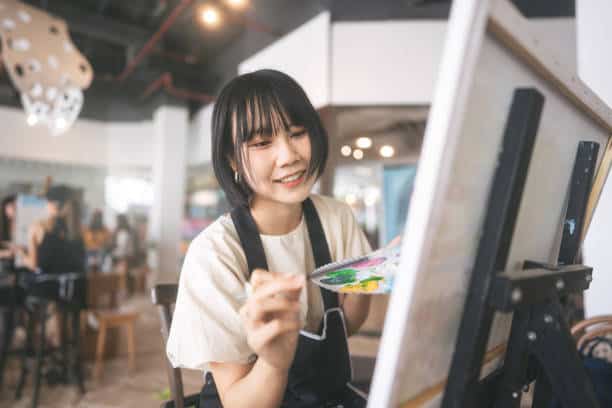Korean Arts and Crafts: Art for the Heart
Introduction
Korean arts and crafts have a rich and diverse history that spans centuries, contributing significantly to the country’s cultural heritage and global artistic appreciation. These traditional forms of artistic expression have not only served as a means of aesthetic pleasure but have also played crucial roles in shaping Korean identity and fostering cultural exchange with other civilizations.
Historical Significance
The origins of Korean arts and crafts can be traced back to ancient times, with evidence of pottery dating as far back as the Neolithic period. Over the centuries, Korean artisans developed various artistic traditions, including ceramics, metalwork, calligraphy, painting, and textile arts. Their craftsmanship was heavily influenced by cultural exchanges with neighboring countries such as China and Japan.

One of the most notable contributions to art history was the invention of “on-glaze” and “under-glaze” techniques in ceramics during the Goryeo Dynasty (918-1392). These techniques revolutionized Korean pottery, creating a distinctive style that featured elegant and refined designs. Later, during the Joseon Dynasty (1392-1897), the iconic celadon ceramics gained popularity, showcasing a delicate blue-green glaze that became a symbol of Korean aesthetics.

Cultural Impact
Korean arts and crafts have played a significant role in preserving and promoting the country’s cultural heritage. The craftsmanship and artistic skills passed down through generations have become a source of national pride. Various art forms, such as traditional dance, music, and painting, often incorporate elements inspired by the country’s historical crafts, allowing the traditions to live on in modern forms.

Click for more at Jeolla Province: The Culinary Heart of Korea
Traditional Korean Painting
Traditional Korean painting holds a distinct place in the country’s artistic heritage, with a history that spans over a thousand years. Rooted in both Confucian and Buddhist traditions, Korean painting has been deeply influenced by nature and spirituality, and its techniques have been refined and perfected by renowned masters throughout the ages.
Overview of Techniques
Traditional Korean painting encompasses a variety of styles and techniques, each with its unique characteristics. Some of the most notable techniques include:
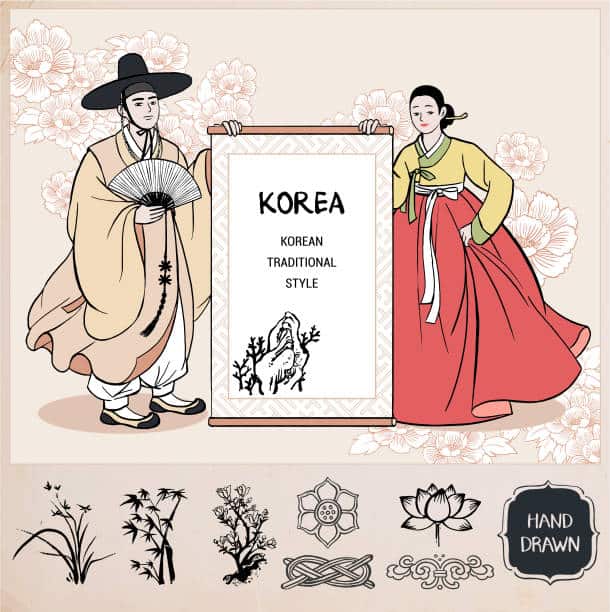
- Minhwa: A folk art style characterized by vibrant colors and simple, often whimsical, representations of nature, animals, and daily life scenes.
- Munjado: A form of calligraphic painting that combines both writing and painting, typically featuring a single Chinese character or Korean syllable.
- Chojahwa: Known for its meticulously detailed depictions of birds and flowers, this style focuses on capturing the essence and beauty of nature.
- Buncheong: A technique used in ceramics, involving painting on the surface of the pottery before glazing, creating a unique and rustic appearance.
- Munkwa: A monochromatic ink painting style inspired by Chinese ink-wash painting, often depicting landscapes, mountains, and rivers.
Influence of Nature and Spirituality
Nature holds profound significance in traditional Korean painting. Artists draw inspiration from the country’s breathtaking landscapes, including mountains, forests, rivers, and wildlife. The depiction of nature is not merely a representation of physical beauty but also embodies spiritual and philosophical elements. Korean painters often aim to capture the harmonious coexistence of humans and nature, reflecting the deep-rooted belief in the interconnectedness of all living things.
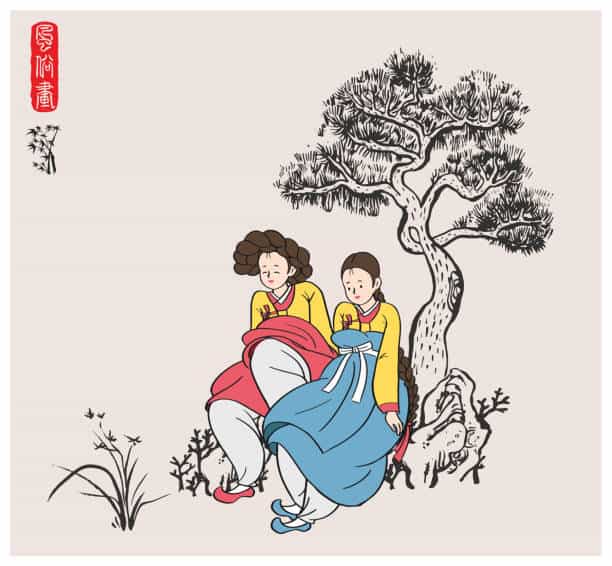
Spirituality also plays a pivotal role in traditional Korean painting, owing to the influence of Confucianism and Buddhism. The concept of balance, harmony, and enlightenment is often depicted through symbolic elements in the artworks. Mountains, rivers, and other natural elements are imbued with spiritual meanings, representing the pursuit of inner peace and enlightenment.
Renowned Korean Painting Masters
Throughout history, Korea has produced numerous celebrated painting masters, whose works continue to inspire and influence artists today. Some notable Korean painters include:
- An Gyeon (c. 1441-1506): An influential artist during the early Joseon Dynasty, known for his masterful landscape paintings that exemplified the “true-view” tradition.
- Shin Yun-bok (1758-?), also known as Hyewon: A highly skilled painter of the late Joseon period, famous for his portraits and genre paintings depicting the everyday lives of commoners.
- Danwon (1820-1897), also known as Kim Hong-do: A versatile artist renowned for his humor and wit in portraying scenes of daily life and social satire.
- Owon (1843-1897), also known as Jang Seung-eop: A renowned figure in the Korean art world, famous for his poetic and emotionally evocative paintings.
The Art of Calligraphy
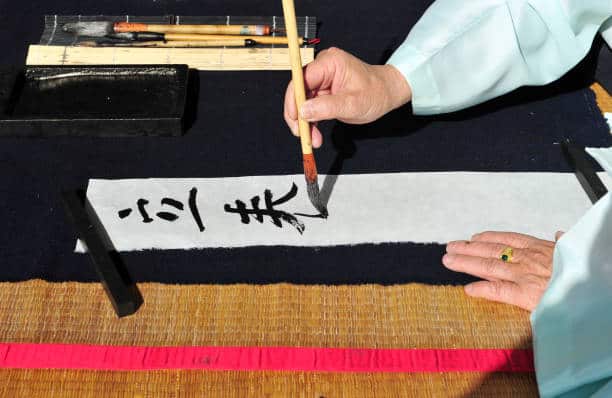
Calligraphy, the elegant art of beautiful writing, holds a special place in Korean culture and has been regarded as one of the highest forms of artistic expression. Rooted in profound aesthetics and influenced by a deep philosophical understanding, Korean calligraphy embodies the essence of Korean identity and cultural heritage.
Aesthetics and Philosophy of Korean Calligraphy
Korean calligraphy is deeply rooted in Confucianism, Buddhism, and Daoism, which greatly influences its aesthetics and philosophical underpinnings. The strokes and brushwork in calligraphy are believed to reveal the inner character and spirit of the artist, expressing their emotions and state of mind at the time of creation.
One of the key principles in Korean calligraphy is “heavenly order” or “haneulcheonghwa,” which emphasizes the harmonious relationship between the natural world and humanity. This philosophy is reflected in the balance of the brushstrokes, the characters’ arrangement, and the artwork’s overall composition.
The concept of “chunbi” or “natural rhythm” is also crucial in Korean calligraphy. It refers to the spontaneous flow of the brush, allowing the calligrapher’s emotions to manifest freely. Achieving a balance between discipline and spontaneity is seen as the mark of a skilled calligrapher.

Calligraphy Tools and Materials: Traditional Korean calligraphy employs minimalistic tools and materials, emphasizing the importance of the artist’s skills over elaborate equipment. The primary tools used in Korean calligraphy include:
- Brush (Bulgun): Made of animal hair, typically from sheep, deer, or wolf, the brush is the most important tool in calligraphy. The brush’s thickness and flexibility can vary, allowing the calligrapher to create diverse styles.
- Ink (Mok): High-quality ink, usually in the form of inksticks, is ground on an inkstone with water to achieve the desired consistency.
- Paper (Hanji): Korean calligraphy is often done on hanji, a traditional handmade paper known for its durability and absorption of ink.
Famous Calligraphers Throughout History
Korea boasts a long lineage of esteemed calligraphers, each contributing to the rich tapestry of the art form. Some renowned calligraphers in Korean history include:
Kim Saeng (1386-1456): A prominent calligrapher during the early Joseon Dynasty, Kim Saeng is celebrated for his delicate and refined style.
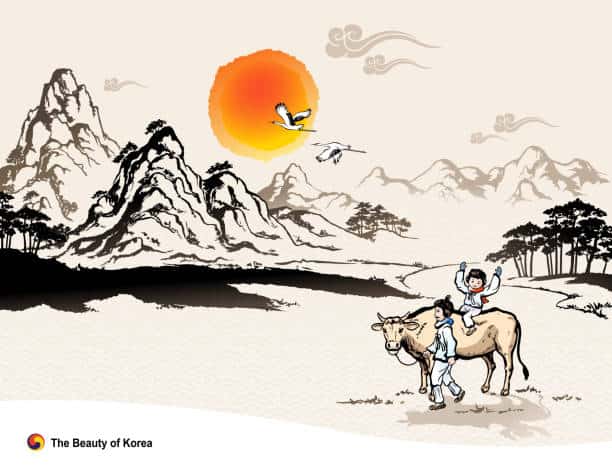
Jeong Seon (1676-1759): Renowned for his “true-view” landscape paintings, Jeong Seon was also an accomplished calligrapher, blending his artistic talents with poetry.
U Seongryong (1756-?), also known as Dukjik: A highly regarded calligrapher of the late Joseon period, U Seongryong excelled in both traditional and free-flowing styles.
Chusa (1786-1856), also known as Kim Jeong-hui: An influential scholar and artist, Chusa’s calligraphy is celebrated for its intellectual depth and expressive power.
Elegant Korean Pottery
Korean pottery, renowned for its exquisite craftsmanship and distinct aesthetics, has a history that spans millennia. From its humble beginnings to its evolution into a revered art form, Korean pottery showcases a unique blend of cultural heritage, artistic innovation, and regional diversity.
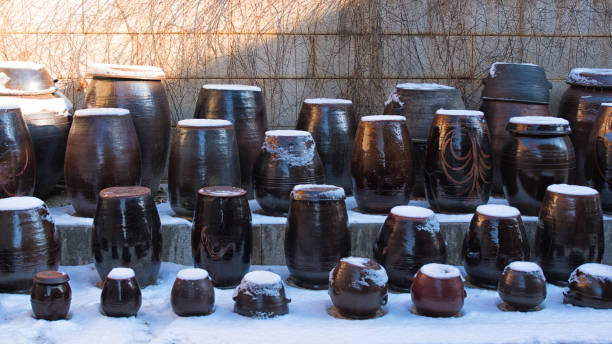
History and Evolution of Korean Pottery
Korean pottery has its roots in the Neolithic era, making it one of the oldest artistic traditions in the world. Initially, simple clay vessels were crafted for practical use, such as storing food and water. Over time, as techniques improved and cultural influences evolved, Korean pottery transformed into a refined art form.
The Goryeo Dynasty (918-1392) marked a significant period in the history of Korean pottery. During this time, celadon ceramics emerged as a distinguished style, characterized by its pale green glaze and intricate designs. These celadon pieces, often adorned with motifs inspired by nature and Buddhist imagery, became highly sought after and symbolized the artistic achievements of the era.
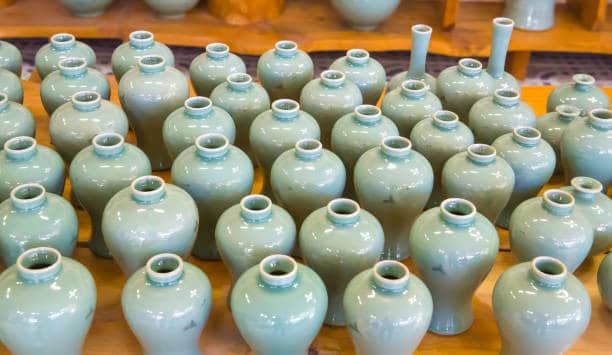
In the subsequent Joseon Dynasty (1392-1897), white porcelain gained prominence. The “moon jar,” a notable example of this period, is an iconic vessel known for its rounded shape and pure white glaze. Joseon pottery was often marked by simplicity and elegance, reflecting the Confucian ideals of modesty and harmony.
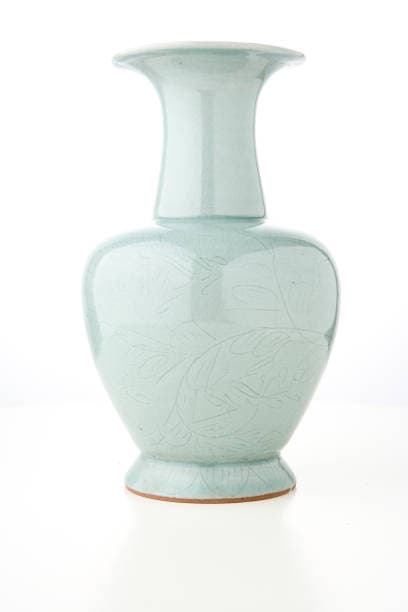
Regional Styles and Techniques: Korean pottery is enriched by its various regional styles and techniques, each influenced by local resources, climate, and cultural factors. Some notable regional styles include:
- Buncheong: Originating during the Joseon Dynasty, buncheong pottery features a subtle blue-green or grayish glaze, often with decorative designs created using slip-trailing or incising techniques.
- Onggi: Traditional earthenware used for storing and fermenting food, onggi pottery showcases a rustic charm and is often left unglazed to allow for proper fermentation.
- Icheon Ceramics: The city of Icheon is renowned for its ceramic production, including diverse styles like white porcelain, celadon, and onggi.
- Gangjin Celadon: This regional style hails from the historic city of Gangjin and is known for its celadon ceramics with intricate inlay designs.
The Role of Pottery in Korean Culture: Korean pottery holds deep cultural significance, transcending its utilitarian purpose to become a symbol of national identity and artistic achievement. It reflects the Korean people’s connection to the land, as clay is sourced from local soil, creating a tangible link between nature and artistry.
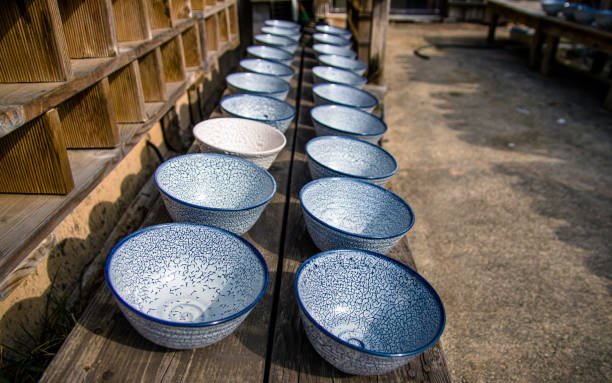
Beyond aesthetics, pottery has practical applications in Korean culture. Traditional dishes like “bibimbap” are often served in pottery bowls called “dolsot,” enhancing the dining experience through the retention of heat and flavors.
In the modern era, Korean pottery continues to thrive as both a revered art form and a source of cultural pride. Ceramic artists combine traditional techniques with contemporary innovations, resulting in a fusion of old and new that resonates with global audiences.
Intricate Korean Ceramics
Delving into the World of Korean Ceramics
Korean ceramics, characterized by their intricate designs and meticulous craftsmanship, stand as a testament to the mastery of artistic expression through clay. Rooted in ancient traditions and infused with cultural significance, Korean ceramics have journeyed through time, evolving into a diverse and cherished art form.
Ceremonial and Everyday Pottery
Korean ceramics encompass a wide range of forms, serving both ceremonial and everyday purposes. Ceremonial pottery holds a sacred place in Korean rituals and cultural practices. From elaborate incense burners to elegant tea sets, these pieces are crafted with utmost care, reflecting the reverence imbued in each ceremony. One such example is the “Janggu,” a ceremonial jar used in ancestral rites to honor the spirits of the departed.

On the other hand, everyday pottery showcases the fusion of beauty and functionality. Vessels like “makgeolli” bowls (used for traditional rice wine) and “hangari” (clay fermentation jars) demonstrate how aesthetics and practicality harmoniously coexist in Korean ceramics. These vessels, though designed for utilitarian purposes, bear the signature intricacies that define the art.
Preservation and Modern Innovations
The preservation of traditional Korean ceramic techniques is paramount to maintaining the heritage of this craft. Many ceramic artists undergo rigorous training to learn the intricate methods passed down through generations. From shaping the clay to glazing and firing, the techniques are honed over years, resulting in pieces that echo the beauty of ancient traditions.

However, the world of Korean ceramics isn’t confined to the past. Modern artisans are imbuing the art form with contemporary innovations, creating a dialogue between tradition and modernity. Artists experiment with new glazes, forms, and firing techniques, resulting in pieces that reflect the evolution of Korean ceramics while paying homage to their roots.
Conclusion
Traditional Korean arts and crafts are more than just beautiful creations; they are a testament to the country’s cultural legacy. From the intricate Hanbok embroidery to the elegant celadon pottery and the mesmerizing Gugak music, each art form reflects the essence of Korean traditions. Through recognition from UNESCO and the efforts of passionate individuals, these art forms continue to thrive, connecting the past with the present and ensuring a vibrant cultural legacy for future generations. As the world embraces diversity and heritage, the timeless charm of traditional Korean arts and crafts shines brighter than ever before.
